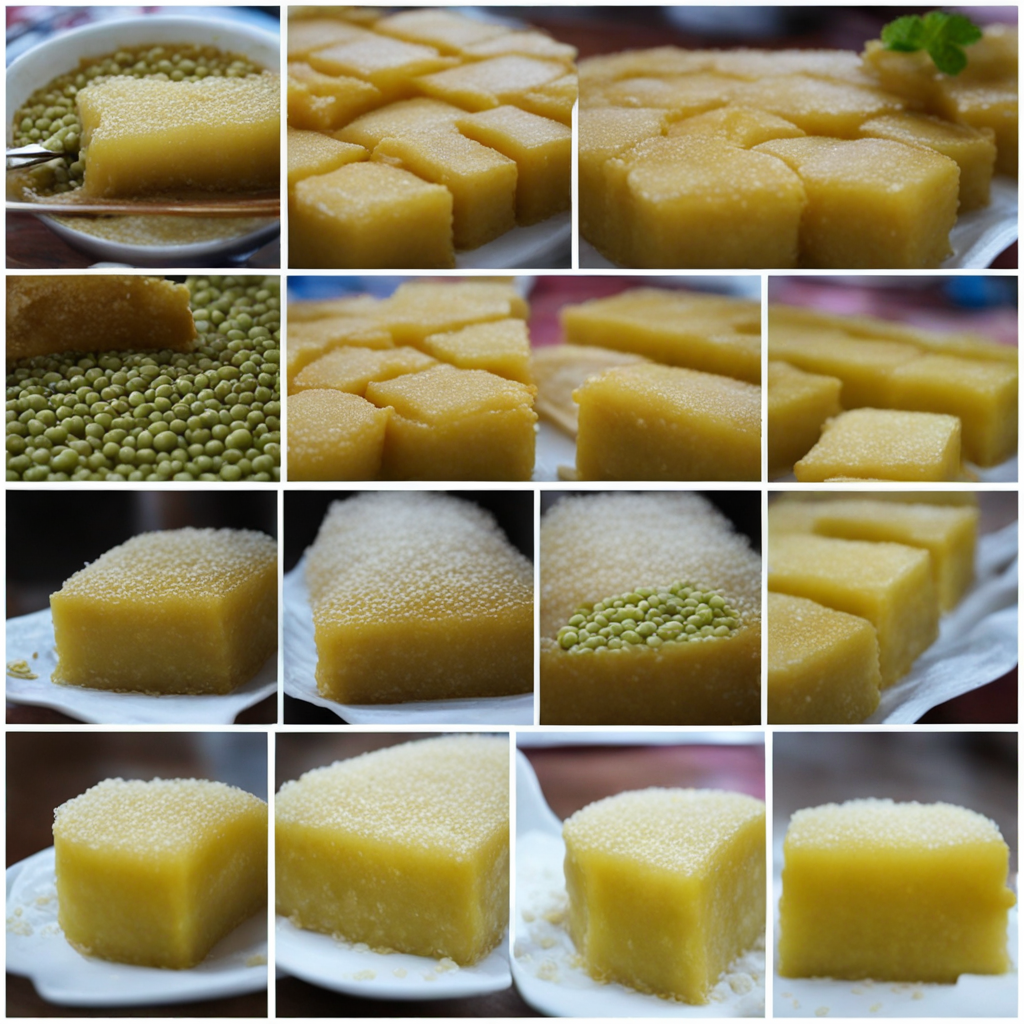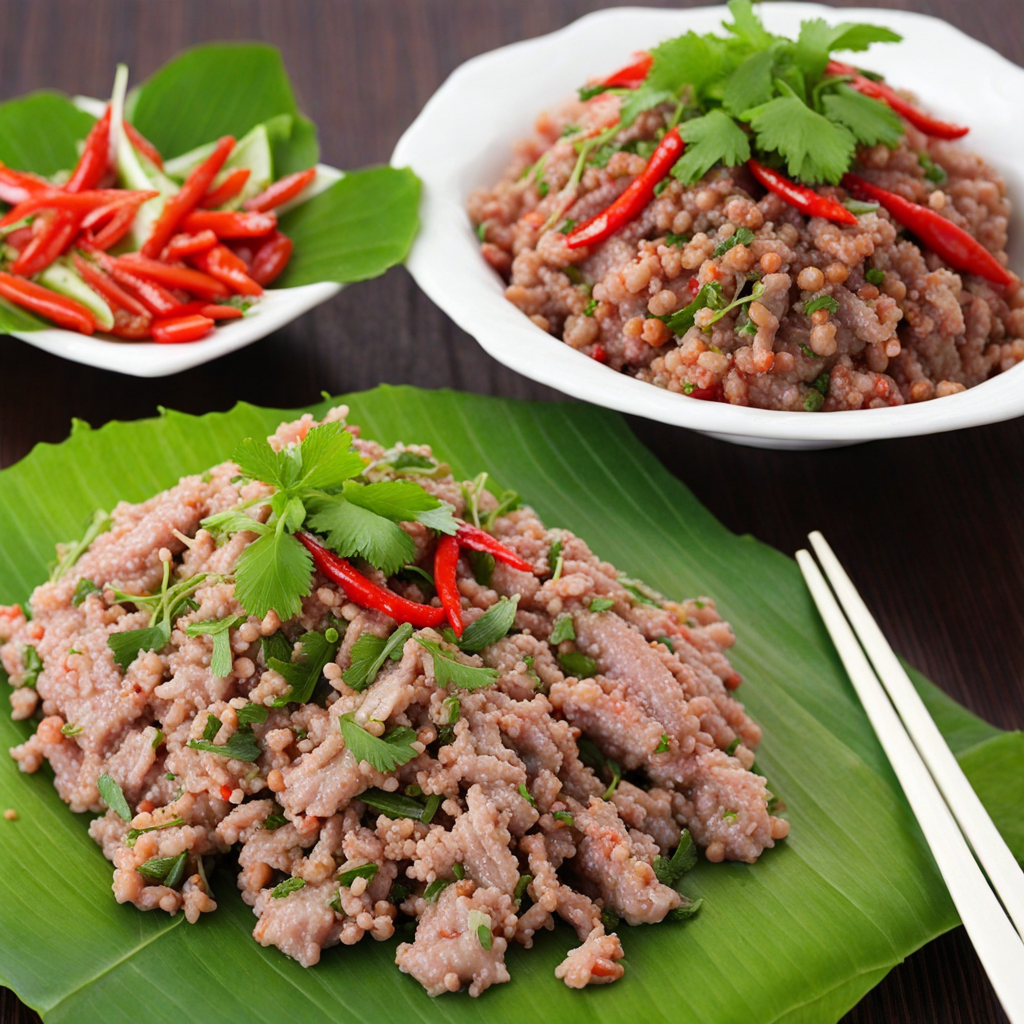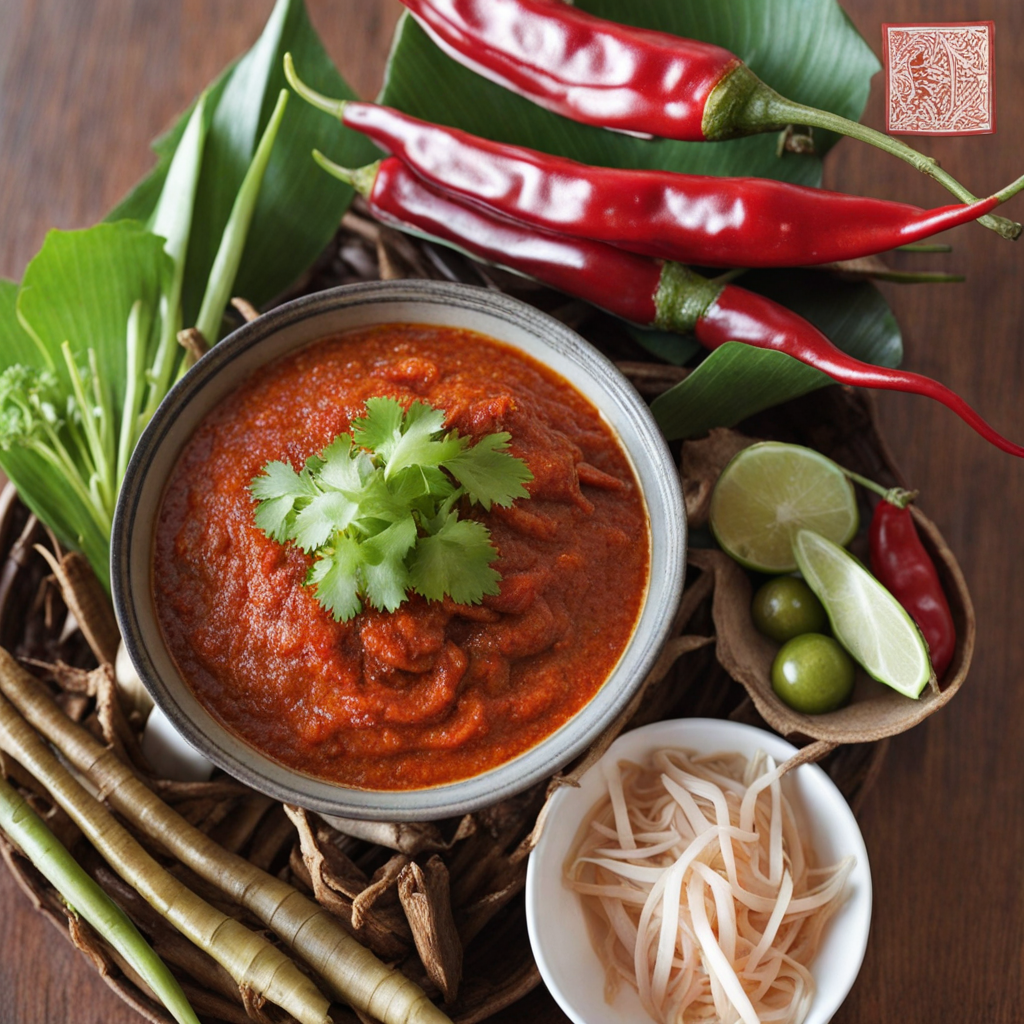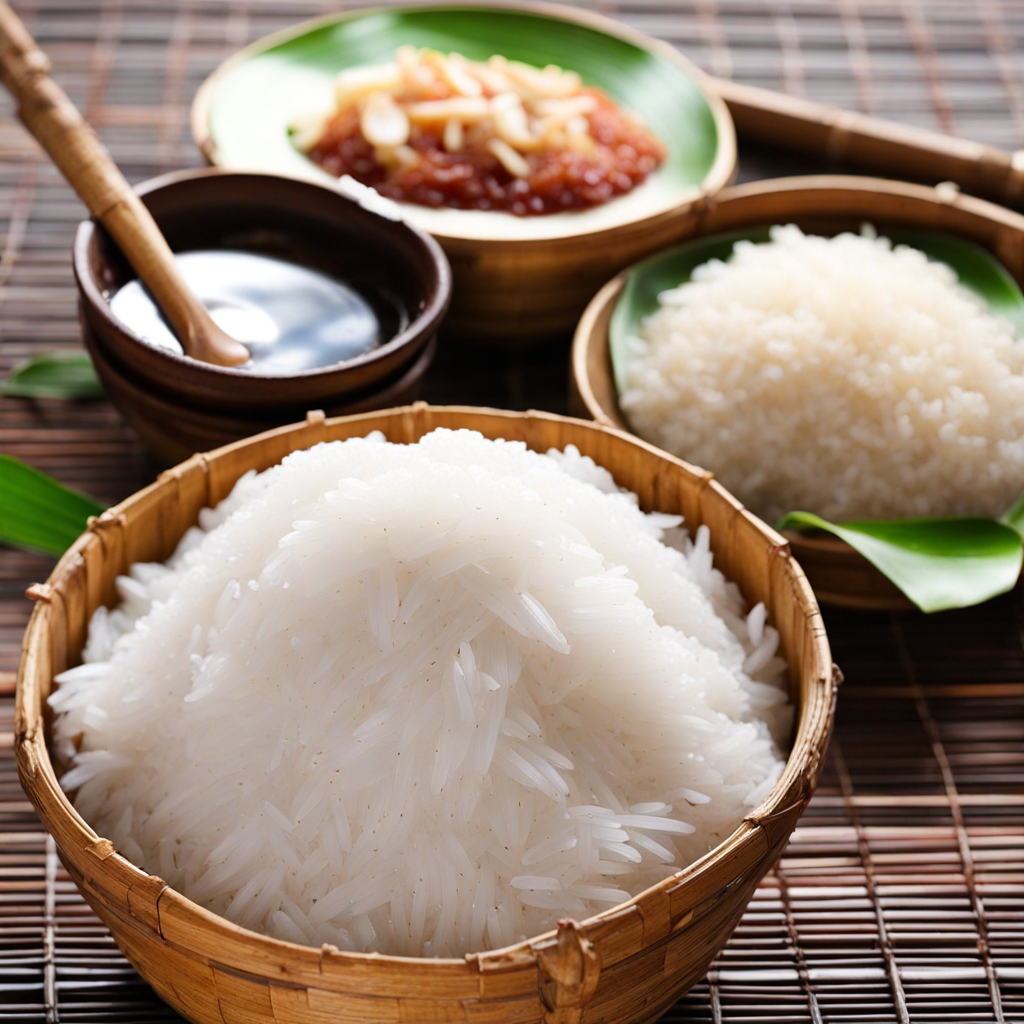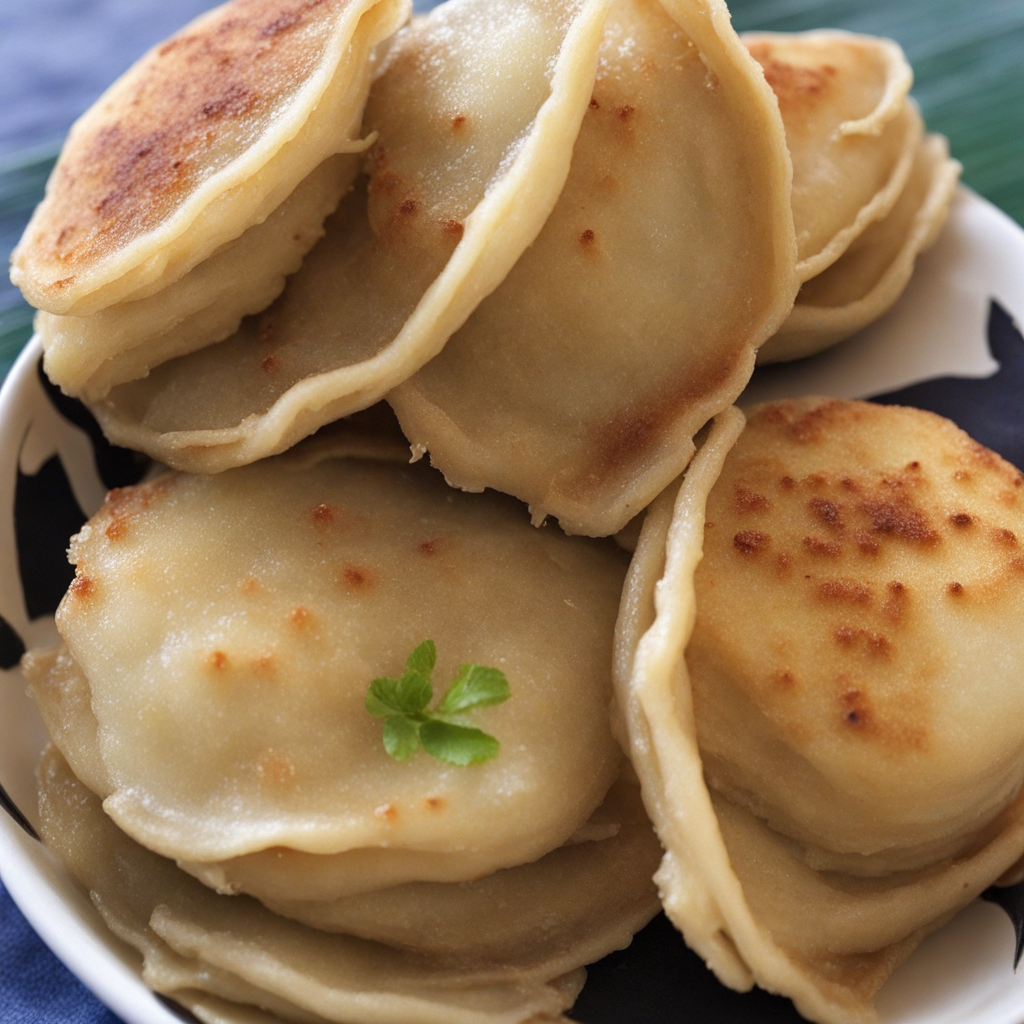Khanom Maw Kaeng
ຂະນົມໝາກແຄງ, pronounced as 'khanom mak khang,' is a traditional Laotian dessert that exemplifies the rich culinary heritage of Laos. This delicately crafted sweet treat is often enjoyed during festive occasions, family gatherings, and religious ceremonies, showcasing the cultural significance of food in Lao society. Its history can be traced back to the fusion of local ingredients and cooking techniques, influenced by neighboring cultures, particularly Thai and Vietnamese. Over the years, ຂະນົມໝາກແຄງ has become a beloved staple, representing the essence of Lao hospitality and tradition. The flavor profile of ຂະນົມໝາກແຄງ is a delightful interplay of sweetness balanced with a hint of saltiness. The primary ingredient is glutinous rice flour, which gives the dessert its characteristic chewy texture. It is typically sweetened with palm sugar, lending a rich, caramel-like flavor that is often enhanced by the addition of coconut milk. The subtle infusion of pandan leaves, known for their aromatic properties, adds a unique fragrance that elevates the overall sensory experience. When prepared correctly, each bite offers a satisfying chewiness complemented by the creamy, sweet, and slightly salty notes from the coconut and palm sugar. The preparation of ຂະນົມໝາ
How It Became This Dish
Origin of ຂະນົມໝາກແຄງ ຂະນົມໝາກແຄງ, pronounced “khanom mak khang,” is a traditional Lao dessert that embodies the rich culinary heritage of Laos. Its origins can be traced back several centuries, with influences from both indigenous Lao culture and neighboring Southeast Asian nations. The name translates to “sticky rice cake,” which succinctly describes the dish's key ingredient—glutinous rice. This staple food of the Lao people plays an integral role in their diet and culture, often associated with various celebrations and rituals. The use of glutinous rice in ຂະນົມໝາກແຄງ reflects the agricultural practices of the region, where rice cultivation has been a cornerstone of Lao society. The Lao people have cultivated rice for thousands of years, and the methods of preparation have been passed down through generations. The dessert combines rice flour with coconut milk, sugar, and sometimes additional flavorings like pandan leaves, making it both sweet and rich in flavor. \n Cultural Significance ຂະນົມໝາກແຄງ holds a special place in Lao culture, often served during festivals, family gatherings, and religious ceremonies. It is a symbol of hospitality and generosity, with families preparing large quantities to share with guests. The dessert is also commonly offered at religious altars to honor ancestors and spirits during important celebrations such as Lao New Year (Pi Mai) and the Boun Khao Padabdin festival, which commemorates the deceased. The preparation of this dessert is often a communal activity, bringing families and friends together in the kitchen. This practice fosters a sense of community and strengthens familial bonds, as recipes and techniques are shared among generations. The act of making ຂະນົມໝາກແຄງ is not only about creating a delicious treat but also about preserving cultural identity and traditions, reflecting the values of togetherness and respect for heritage. \n Development Over Time While the fundamental ingredients and preparation methods of ຂະນົມໝາກແຄງ have remained largely unchanged, the dessert has undergone variations as it has been embraced by different regions within Laos and influenced by modern culinary trends. In urban areas, for example, you may find more innovative interpretations that incorporate diverse flavors or presentation styles, such as colorful layers or additional fillings. The globalization of food culture has also led to the introduction of ຂະນົມໝາກແຄງ to international audiences. As more Lao restaurants open in various countries, this dessert is increasingly featured on menus, allowing people outside of Laos to experience its unique taste. This has sparked a revival of interest in traditional Lao cuisine, as chefs and home cooks alike seek to showcase their cultural heritage. \n Regional Variations In different parts of Laos, variations of ຂະນົມໝາກແຄງ can be found, each with its unique twist. For instance, in the northern provinces, the dessert may include local ingredients such as wild herbs or fruits, reflecting the region’s biodiversity. The southern region, on the other hand, might incorporate coconut shavings or use different types of sweeteners, resulting in a distinct flavor profile. These regional differences highlight the adaptability of traditional Lao recipes while also celebrating local resources. Such variations also serve to strengthen regional identities within the broader context of Lao culture. As travelers venture into different parts of the country, they often discover that each version of ຂະນົມໝາກແຄງ tells a story about the land and its people. \n Modern Adaptations In recent years, there has been a growing trend toward healthier eating, leading to modern adaptations of traditional dishes, including ຂະນົມໝາກແຄງ. Some cooks are experimenting with alternative sweeteners like honey or agave syrup, and others are creating gluten-free versions using different types of flour. These adaptations are not only appealing to health-conscious consumers but also serve to introduce traditional flavors to younger generations who may be more inclined toward contemporary food trends. Social media has played a significant role in promoting these modern adaptations, with food bloggers and influencers sharing visually appealing versions of ຂະນົມໝາກແຄງ, often garnished with vibrant toppings or presented in creative ways. This visibility has encouraged a resurgence of interest in traditional Lao desserts and has fostered a sense of pride among the Lao diaspora in their culinary heritage. \n Conclusion As ຂະນົມໝາກແຄງ continues to evolve, it remains a cherished symbol of Lao culture. Its deep-rooted history, combined with its adaptability to modern tastes, reflects the resilience and richness of Lao culinary traditions. Whether enjoyed during a festive gathering or as a comforting treat at home, ຂະນົມໝາກແຄງ is a testament to the enduring legacy of food as a means of connection and expression of cultural identity. Through this delightful dessert, the stories of the Lao people are preserved and celebrated, ensuring that future generations will continue to enjoy and appreciate its significance.
You may like
Discover local flavors from Laos


